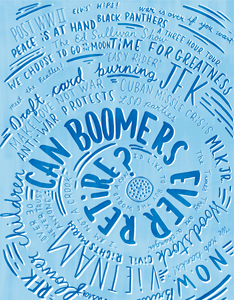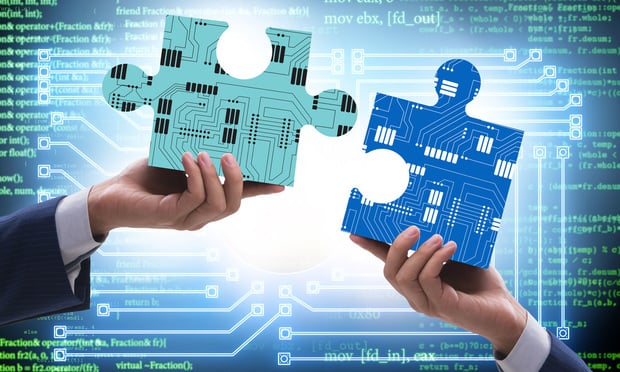
There’s a common misconception about how people plan for theirretirement: They don’t. And while it used to be something thatwould often “work itself out,” that’s no longer the case.
|“Historically there have been safety nets in place for thenon-planner—pension plans, Social Security and private savings,”says Pete Welsh, VP of Product and Marketing Strategy atOneAmerica. But now there’s less of those supports available, hesays.
|Some say as much as two-thirds of retirement income now comesfrom sources that future retirees won’t be able to count on. Andthat, says Rethinking Retirement author Keith Weber, is “not justa financial issue, but a cultural issue that will change theprogression of how future generations define their careers and leadtheir lives.”
|Defined-benefit plans are either disappearing or under pressurein the private and government sectors. Social Security benefits areexpected to shrink, especially for higher income beneficiaries.Contribution plans aren’t completely assured. Interest rates arepractically laughable.
|Over the last 30 years, the United States has, by design,converted its retirement income delivery system from an emphasis onpensions managed by professional investment managers to one basedon defined contribution plans—think 401(k)s—managed by individuals,explains Richard Schmitt, a Golden Gate University professor andauthor of 401k Day Trading. The responsibility has left mostlyuntrained individuals without the time, inclination or interest inmanaging their retirement savings.
|“Many people faced with saving for retirement have becomeafflicted with inertia paralysis. They either do not save or haveresorted to a set-it-and-forget-it investment philosophy withrespect to their retirement savings, just hoping for the best.”
|And all that’s doing is brewing a recipe for disaster.
|“If you don’t plan for retirement, you probably won’t have aretirement,” Welsh adds. Part of that individual responsibilityincludes personal savings. It’s just too bad most Americans tendnot to have it.
|Even the more wealthy Americans, according to a survey fromWells Fargo Retirement, are just as insecure about their ability toretire comfortably as their middle-class counterparts. A third ofaffluent Americans—everyone from age 25 to 75—say they need tosignificantly cut back their spending to save for retirement,including 48 percent of those with $100,000 to $250,000 ininvestable assets.
|Of course the country’s economic woes haven’t done anything toboost Americans’ retirement planning. After the 2008 financialmeltdown, for some, retirement was put on the backburner as moreimmediate needs were prioritized. Any gains since then haven’t beenable to make a dent in the country’s collective pessimism.
|Plus, there’s the simple fact that people are living longer andspending more years in retirement.
|“If we were only expected to support ourselves for 7-8 years inretirement as was the case in the 1930s when Social Security wascreated and using the then-current assumptions that most pensionactuaries used, Social Security would still be solvent, pensionswould be affordable for most strong, well-managed companies, andpersonal savings would not need to be north of $1 million perperson,” Weber says.
|Let’s examine the most common retirement income sources.
|Social Security
People like Jan Armani, a 57-year-old office manager in Denver,are dependent on Social Security. When she retires, she plans touse Social Security for monthly bills, and supplementing that withother retirement income for the unexpected. “I’ve worked now for 42years without any break and I certainly hope Social Security comesthrough for me,” she says. “Many of my jobs did not have retirementplans so I always counted on Social Security.”
|But a funny thing happened to the once-reliable program. It’ssimply become a bad numbers game—too many people and not enoughmoney to distribute.
|It’s gotten so bad that people don’t trust the system, andwonder aloud if Social Security will even exist much longer. Aretheir fears justified?
|“Yes,” Schmitt says. “The combination of demographics andpromised benefits threatens the solvency of the Social Securitysystem.” Projections indicate that Social Security taxes andreserves will be unable to pay full benefits by 2037. “2010 markedthe first year that Social Security taxes did not cover benefitpayments. Yet Congress lowered Social Security payroll taxes in 2011 and at least through February 2012,”Schmitt explains.
|Without radical change—to taxes, to benefits levels or toretirement age—it can’t, and won’t, continue.
|That dire situation even has some pondering a once-unthinkablequestion—should I claim my benefits early? The resounding answer,any reasonable financial expert argues, is no.
|In fact, many experts say they not only shouldn’t claim SocialSecurity early, but put it off for as long as you can afford it.The longer you wait, the bigger increase in benefits you’llreceive. A person can take reduced benefits starting at 62, but“those reductions are permanent for your lifetime and aresignificant,” Weber says.
|Others, like Welsh, say Social Security ultimately will be justfine.
|“Medicare and Medicaid are a disaster, but with Social Security,we’ve got a fair amount of room to steer this ship right if we justget it right—whether it be extending the retirement age, tweakingsome of the contribution rates—but I think there’s going to besomething there,” Welsh says. [Read "Mostconcerned about Medicare future"]
|Still, older generations like Armani say they worry more fortheir children. “I think more about how badly our government isbeing run currently, which will most likely affect the future formyself and most definitely for my son. If the government is takingmoney out of our monthly income for our future it should belong tous and only us.”
Pensions
Pensions, too, aren’t what they used to be to retirees. Theyhave really been the “gold-standard” for retirement revenue, Welshexplains, as it’s a dream come true to put nothing in and still geta sizeable return. But it’s just too much of a financial commitmenton the part of the employer and that erratic nature of thecommitment is problematic, too.
|“The reality is the CFO of a big company can’t stand that typeof volatility,” Welsh says. “From a funding standpoint, with thesole responsibility resting on the employer’s shoulder and the needto be leaner and meaner in the U.S. economy, pension plans aredeclining.”
|The funded status of pension plans has been on a wild ride since2008, experiencing major declines in 2008, 2010 and 2011. Thosedrops were due to the double whammy of declining equity markets andlower interest rates.
401(k)s
Without pensions or a guarantee of Social Security benefits,most people under age 50 use their 401(k) as their main retirementvehicle—due largely to its adoption by employers.
|“Employers looking to cut expenses are abandoning costly andinflexible traditional pension plans, for which employers are atrisk for funding shortfalls, and instead replacing them with lessexpensive defined contribution plans due to their more predictablecosts,” explains Schmitt.
|Still, many participants don’t contribute enough to theiraccounts, even if they think they do.
|“There’s two average kind of account balances—the mean and themedian. The mean doesn’t look that dismal—it’s about $75-80,000,but the median is under $25,000,” Welsh says. “Some people thinkthey have done a great job but it tends to be disheartening forsome and that’s where we are at as an industry right now. We’retrying to get people to do something and then do it in a sufficientfashion but also tempering that against the reality. Even if yousaved a couple hundred thousand dollars, the lifetime annuity onthat will be nice, but it’s not going to be what many peoplethink—which is ‘I’ve saved $200,000 and now I can live wellforever.’ It’s just not going to work that way.”
Other sources
Of course, there are the old standbys for retirement income:Stocks and mutual funds, insurance and annuities, real estate orinheritance, for instance.
|But these methods hardly pay the monthly bills and often areunreliable plans. Investors are weary to invest, for obviousreasons. There’s often fine print associated with financialproducts such as insurance and annuities and many older peopledon’t fully understand them. Only about five percent of Americanssay rent or royalties will help finance their retirement. And mostpeople don’t have a rich Aunt Ethel that will leave them a goodchunk of change to live on. Less than ten percent of workers expecta significant amount of wealth to be left for them—and even if theydo expect it, it’s important to remember beneficiary forms are easyto change.
|And though more Americans than ever are working part-time tosupplement income after they officially retire, it’s notnecessarily a good plan to have, experts say. While many workersassume they can return to work, it’s not easy for older workers toreenter the work force. Once unemployed, older workers are usuallyout of work longer than their younger counterparts, according tothe AARP Public Policy Institute.
What can you count on?
So without government programs, your employer or a rich familymember to depend on, there’s just one person to depend on:yourself.
|This is especially vital information for young workers whoseretirement future might be in question most—the ones who, for themost part, spend what they make, are ridden with college debt anddon’t have any savings.
|But to some extent, trouble can be avoided for both young andold by adjusting expectations, Schmitt says.
|“Faced with an erosion of two of the three traditional pillarsof retirement security against a backdrop of an unprecedentednational debt, it appears that any retirement solution will requireindividuals’ acceptance of more personal responsibility in savingand investing,” Schmitt says. “Lucky for them, the young have moretime to save and invest for the time when they will rely upon theirsavings for support in retirement.”
|Also read "Babyboomers are reaching age 65, but are they actuallyretiring?"
Complete your profile to continue reading and get FREE access to BenefitsPRO, part of your ALM digital membership.
Your access to unlimited BenefitsPRO content isn’t changing.
Once you are an ALM digital member, you’ll receive:
- Critical BenefitsPRO information including cutting edge post-reform success strategies, access to educational webcasts and videos, resources from industry leaders, and informative Newsletters.
- Exclusive discounts on ALM, BenefitsPRO magazine and BenefitsPRO.com events
- Access to other award-winning ALM websites including ThinkAdvisor.com and Law.com
Already have an account? Sign In
© 2024 ALM Global, LLC, All Rights Reserved. Request academic re-use from www.copyright.com. All other uses, submit a request to [email protected]. For more information visit Asset & Logo Licensing.








